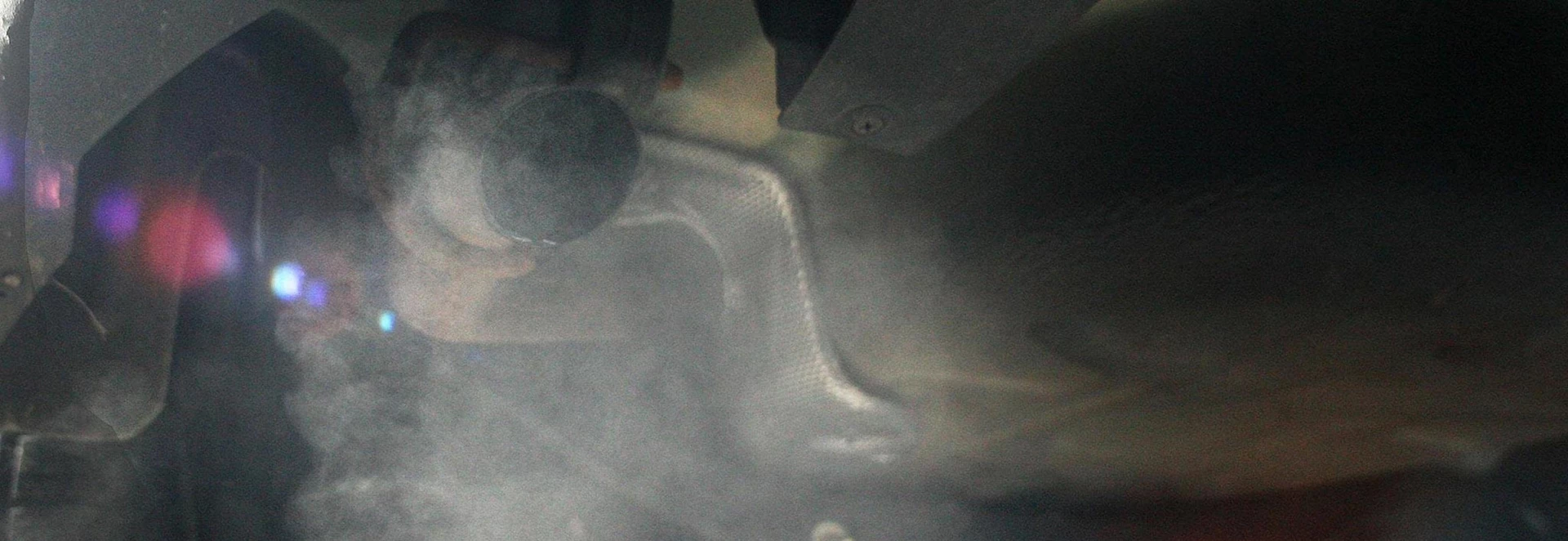There’s a lot going on around vehicle emissions at the moment with the 2017 UK Scrappage Scheme, and it’s not going to go away soon. Euro Emissions standards are effectively a measure by which the tailpipe emissions of a vehicle are monitored and governed across the European car market.
Why were Euro Emissions Standards introduced?
While the hype may seem fairly recent, Euro standards have been with us for quite some time, with the first emissions standard, called Euro 1, introduced way back in 1993 – a move that led to the mandatory fitting of catalytic convertors to all new cars.
The standards set the limits for tail-pipe emissions from cars and light commercial vehicles (LCVs) - such as vans and pick-up trucks in all EU markets.

What are Euro Emissions Standards?
Each of the standards Euro 1 to Euro 6 (the latest) represent a total amount of exhaust gas emissions from a car. They measure four main groups of emission – carbon monoxide, hydrocarbons, nitrous oxide and particulate matter.
What Euro standard is my car?
For cars, the six stages of emissions reduction occurred in 1993 (Euro 1), 1996 (Euro 2), 2000 (Euro 3), 2005 (Euro 4), 2009 (Euro 5) and 2014 (Euro 6). In recognition of the challenges to reduce diesel particulate matter, the Euro 5 regulations were staged for diesel cars, with Euro 5a coming in in 2009 and Euro 5b in 2011.
Depending on when your car was registered, the above dates reflect the absolute minimum emissions standard it must adhere to, though you can check your cars exact emissions standard on the gov.uk website, here.
Most of the scrappage schemes being promoted at the moment focus on cars of the Euro 4 standard or lower, the vast majority of which are eight years old or more. The original scrappage scheme, launched in 2009, targeted cars from 1998 and earlier, many of which were no better than Euro 2 standard.
Euro 1 allowed for a maximum of 2.72g/km of carbon monoxide and 0.97g/km of hydrocarbons for any car, while diesels were also measured on particulate matter, which needed to come in at below 0.14g/km.
To put that into perspective, today’s limits (Euro 6) for a petrol car are 1.0g/km of carbon monoxide and 0.17g/km of hydrocarbons, and for diesel cars the limit is 0.5g/km of carbon monoxide and 0.17g/km of hydrocarbons. Both petrol and diesel cars must emit less than 0.005g/km of particulate matter, hence the introduction of diesel particulate filters (DPFs) in the late-2000s.

Here are the exact limits for each class:
Euro 1 (EC93)
Applies to all new cars registered from 1 January 1993
Petrol: CO: 2.72g/km HC + NOx: 0.97g/km
Diesel: CO: 2.72g/km HC + NOx: 0.97g/km PM: 0.14g/km
Euro 2 (EC96)
Applies to all new cars registered from 1 January 1997
Petrol: CO: 2. 20g/km HC + NOx: 0.50g/km
Diesel: CO: 1.00g/km HC + NOx: 0.70g/km PM: 0.08g/km
Euro 3 (EC2000)
Applies to all new cars registered from 1 January 2001
Petrol: CO: 2.30g/km HC: 0.20g/km NOx: 0.15g/km
Diesel: CO: 0.64g/km HC: 0.56g/km NOx: 0.50g/km PM: 0.05g/km
Euro 4 (EC2005)
Applies to all new cars registered from 1 January 2006
Petrol: CO: 1.00g/km HC: 0.10g/km NOx: 0.08g/km
Diesel: CO: 0.50g/km HC + NOx: 0.30g/km NOx: 0.25g/km PM: 0.025g/km
Euro 5
Applies to all new cars registered from 1 January 2011
Petrol: CO: 1.00g/km HC: 0.10g/km NOx: 0.06g/km PM: 0.005g/km
Diesel: CO: 0.50g/km HC + NOx: 0.23g/km NOx: 0.18g/km PM: 0.005g/km PM: 6.0x10 ^11/km
Euro 6
Applies to all new cars registered from 1 September 2015
Petrol: CO: 1.00g/km HC: 0.10g/km NOx: 0.06g/km PM: 0.005g/km PM: 6.0x10 ^11/km
Diesel: CO: 0.50g/km HC + NOx: 0.17g/km NOx: 0.08g/km PM: 0.005g/km PM: 6.0x10 ^11/km

What about alternative fuel cars?
Most electric and hybrid cars come in way below the Euro 6 threshold, and there is talk about a different way of measuring their environmental impact. However, As Europe's requirements for its vehicle fleets head toward a goal of 98 grams of CO2 per kilometre by 2020, the global McKinsey research institute believes the only way that car companies will achieve such a goal whilst still making money is with plug-in vehicles.
Are Euro Emissions classes the same for all types of vehicle?
No – While the current standard of Euro 6 has the same name regardless of vehicle type, the rules for cars, vans, trucks, buses and non-road vehicles such as agricultural machinery are all different. Indeed, Euro 6 was introduced for trucks before it was implemented for the car market, but with different limits and parameters. There is also a separate classification for commercial vehicles known as an Enhanced Environmentally Friendly Vehicle (or EEV), which is often an older model that wasn’t compliant with Euro 6 when new, but has been brought up to standard using retrofit technology.
Will there be a Euro 7?
There is neither a confirmed date nor commitment that a Euro 7 emissions standard will be introduced, though it is widely believed that it will happen, most likely in 2020 or 2021. However, industry pundits suggest that the next level of Euro standard will focus on carbon dioxide reduction, rather than direct pollutants as it has done so far.
From 23rd October 2017, the London T-Charge will be introduced, so knowing your Euro emission standard is vital to avoid big fines. You can find more about the London T-Charge here.
Due to the UK Scrappage scheme, you may be switching your car to a euro 6 compliant car. Here’s all you need to know to ensure you get the best deal through the 2017 UK scrappage schemes




